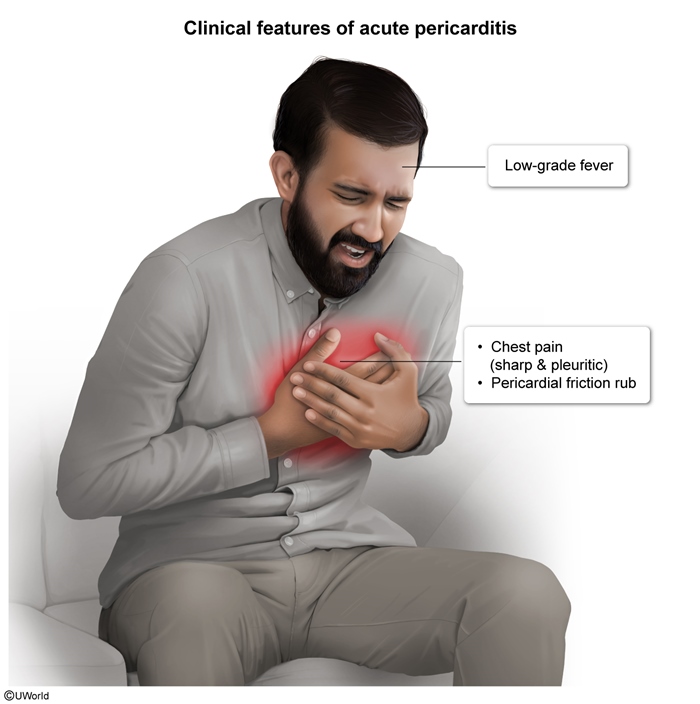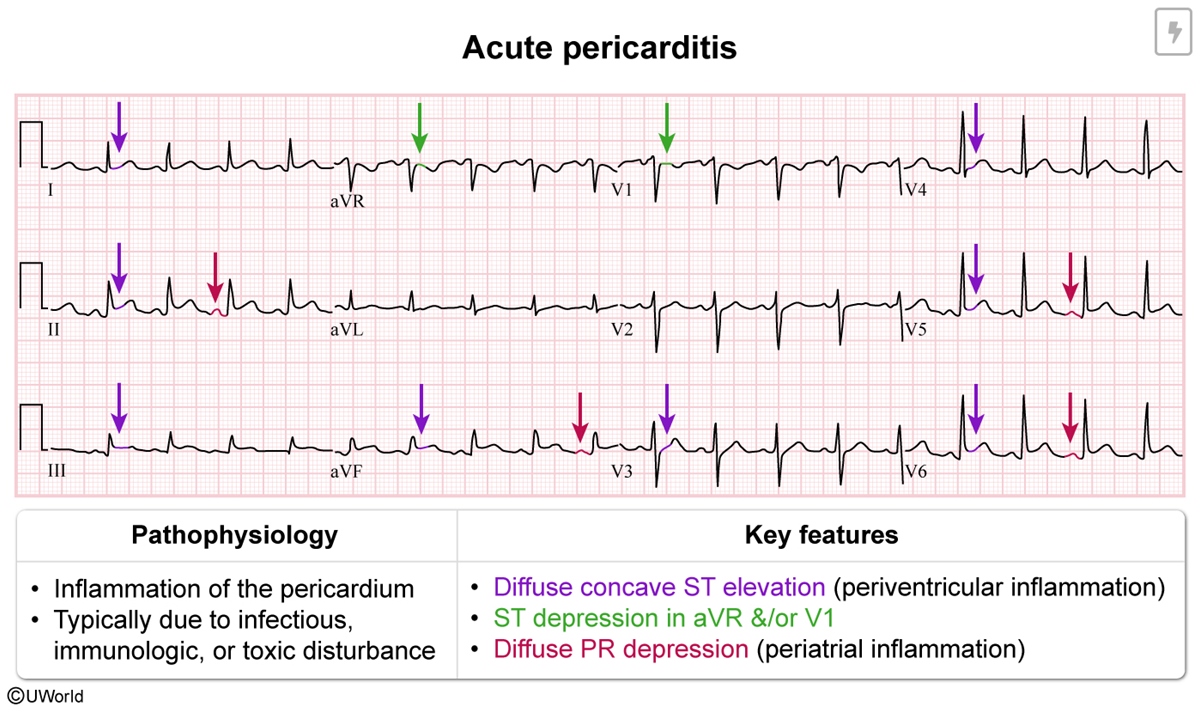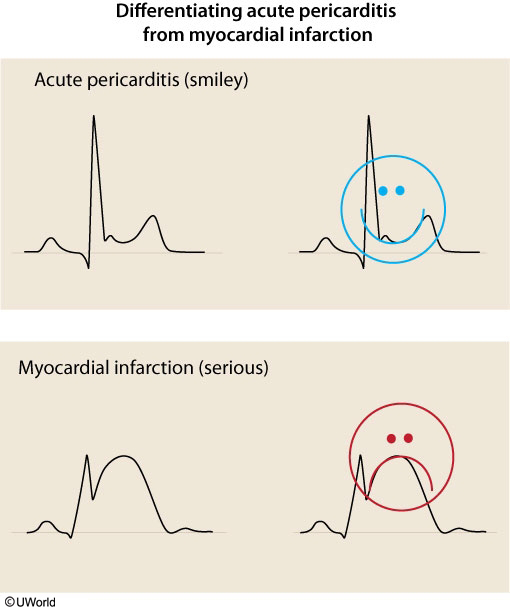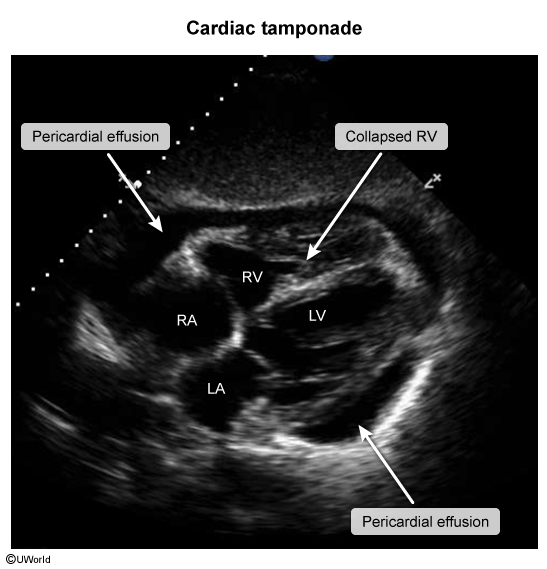Acute Pericarditis
Article Sections
Introduction
Pericarditis refers to inflammation of the pericardium, the protective sac surrounding the heart.
Pathophysiology
The pericardium consists of 2 parts: the outer fibrous pericardium and the inner serous pericardium. The serous pericardium is composed of a parietal layer, which abuts the fibrous pericardium, and a visceral layer, which abuts the surface of the heart. Between the parietal and visceral layers is the pericardial space, which normally contains a small amount of fluid that helps minimize friction between the heart and pericardium as the heart contracts.
Pericarditis results from a systemic or localized inflammatory process that involves the pericardium. There is infiltration of inflammatory cells (eg, neutrophils, lymphocytes) into the pericardium, often with increased production of inflammatory fluid (ie, pericardial effusion). The fluid can be fibrinous, serous, hemorrhagic, or purulent depending on the underlying source of inflammation. Rapid or large-volume accumulation of pericardial fluid can increase the risk for cardiac tamponade. Persistent inflammation can cause fibrosis and adhesions that restrict pericardial movement.
Continue Learning with UWorld
Get the full Acute Pericarditis article plus rich visuals, real-world cases, and in-depth insights from medical experts, all available through the UWorld Medical Library.
Figures



Images
